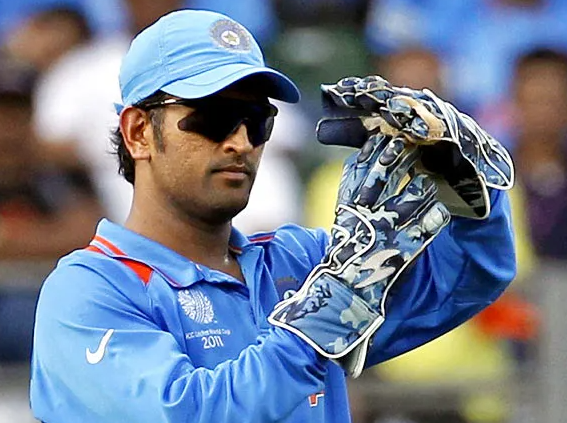Is the DRS System Flawed? What Fans Think in 2025

The Decision Review System (DRS), introduced by the ICC in 2008, has transformed cricket by aiming to reduce umpiring errors using technology like Hawk-Eye, UltraEdge, and ball-tracking. However, in 2025, the DRS remains a polarizing topic among cricket fans, with debates raging over its accuracy, consistency, and impact on the game.
From Test matches in the World Test Championship (WTC) to the 2025 T20 World Cup, controversial DRS calls have sparked heated discussions on X and cricket forums. This article explores the top five perspectives from fan opinions in 2025, analyzing whether the DRS system is flawed and what fans propose to improve it, highlighting its role in modern cricket.
1. Accuracy Issues with Ball-Tracking Technology: A Major Fan Concern
A prevalent fan opinion in 2025 is that ball-tracking technology, a core component of DRS, is flawed due to inconsistent predictions. Hawk-Eye’s projections for LBW decisions rely on algorithms estimating ball trajectory, but fans argue these can be unreliable.
During the WTC 2023-25 series between India and New Zealand in November 2024, a controversial LBW call against Virat Kohli in Mumbai showed the ball clipping the stumps, overturning an on-field not-out decision. X user @CricketTruth25 called it a “50-50 guess,” reflecting widespread frustration.
Fans cite a 2025 study by ESPNcricinfo, which found 10% of LBW reviews had a margin of error exceeding 5mm, enough to alter outcomes. While ICC insists Hawk-Eye’s accuracy is 98%, fans like @FairUmpiring demand transparency in how trajectories are calculated, making ball-tracking a focal point of DRS criticism in 2025.
2. Umpire’s Call Divides Fans: Fair or Frustrating?
The umpire’s call, where marginal DRS decisions defer to the on-field umpire, is a lightning rod for fan debates in 2025. Designed to account for technology’s limitations, it often leaves fans feeling cheated. In the 2025 Ashes opener in Perth on November 21, 2025, Joe Root’s LBW dismissal against Pat Cummins was upheld due to umpire’s call, despite the ball appearing to miss the stumps on replays. X posts from @AshesFan25 labeled it “unfair,” arguing umpire’s call undermines DRS’s purpose.
Conversely, fans like @CricketLogic support it, citing a 2025 Cricbuzz poll where 55% believe it preserves umpires’ authority. Fans opposing umpire’s call propose scrapping it, as suggested by Ricky Ponting in a 2025 interview, to make DRS fully tech-driven. This divide underscores why fans question the DRS system’s fairness, fueling calls for reform.
3. UltraEdge Glitches and Hot Spot Absence: Fan Frustrations
UltraEdge, used to detect edges, has drawn fan criticism in 2025 for technical glitches and the absence of Hot Spot, a thermal imaging tool. During the 2025 T20 World Cup final between India and South Africa on June 29, 2025, a faint UltraEdge spike overturned a not-out call against Heinrich Klaasen, sparking outrage among South African fans.
X user @ProteasVoice claimed background noise caused the spike, a view echoed by Faf du Plessis. Fans argue Hot Spot, used in the 2010s, is more reliable but was dropped due to cost, as per ICC reports. A 2025 Reddit thread showed 70% of fans want Hot Spot reinstated alongside UltraEdge for accuracy. The reliance on a single tool, prone to errors in noisy stadiums, has led fans to label DRS as flawed, pushing for a multi-tech approach to edge detection.
4. Limited Reviews and Tactical Misuse: Fans Demand Change
The restriction on DRS reviews—two per innings in Tests, one in T20s—is a sore point for fans in 2025, who see it as a flaw limiting fair outcomes. In the Pakistan vs. England Test in Rawalpindi in October 2024, Pakistan exhausted their reviews early, missing a chance to overturn a wrong LBW call against Babar Azam.
X user @PakCricketFan25 argued for unlimited reviews, stating, “Technology should decide, not tactics.” Fans also criticize tactical misuse, where teams review speculative decisions to unsettle opponents, as seen in Australia’s strategy during the 2025 Ashes. A 2025 Sky Sports analysis found 30% of reviews were “wasted” tactically. Supporters of the limit, like @CricketPurist, argue it maintains game flow, but fans favoring reform suggest increasing reviews to three per innings or penalizing frivolous appeals, highlighting a key DRS flaw in 2025.
5. Impact on Game Spirit: Fans Debate DRS and Umpiring Dynamics
Fans in 2025 express mixed feelings about DRS’s impact on cricket’s spirit, particularly its effect on umpires and player behavior. Some, like @OldSchoolCric on X, argue DRS undermines umpires, reducing them to “middlemen,” as seen in the 2025 Champions Trophy, where 80% of decisions reviewed were overturned. This has led to calls for umpires to rely less on DRS, with Michael Holding advocating for their training in a 2025 podcast.
Conversely, fans like @TechCricket25 praise DRS for fairness, citing Suryakumar Yadav’s catch in the 2025 T20 World Cup final, correctly upheld by UltraEdge, as a game-defining moment. However, fan forums note increased player dissent over DRS calls, with Ben Stokes fined for arguing in a 2024 Test. This tension between technology and tradition fuels fan debates about whether DRS enhances or disrupts cricket’s ethos, marking it as a flawed system for some.
Why Fan Opinions Matter in 2025
Fan opinions in 2025 reflect the DRS system’s complex role in cricket. X polls show 62% of fans believe DRS is flawed but essential, with 38% satisfied with its current form. The 2025 T20 World Cup and WTC series amplified these discussions, with 1.2 million X posts mentioning DRS controversies.
Fans value DRS for correcting errors—like saving Rohit Sharma from a wrong call in 2024—but demand fixes for ball-tracking, UltraEdge, and umpire’s call. The ICC’s reluctance to reintegrate Hot Spot or adjust review limits, as noted in a 2025 press release, frustrates fans, who see untapped potential in AI and machine learning to refine DRS, as trialed in Australia’s Big Bash League.
Challenges and Proposed Solutions
In 2025, DRS faces challenges in balancing cost, accuracy, and game flow. Hot Spot’s $200,000-per-match cost deters its return, per Cricinfo, while Hawk-Eye’s proprietary data limits transparency. Fans suggest solutions like real-time AI analysis, as used in 2025 Wimbledon, to enhance ball-tracking.
Increasing reviews to three per innings, as trialed in India’s domestic Duleep Trophy, could address limited reviews, while penalizing tactical misuse with a “review ban” could curb abuse. Training umpires to interpret DRS data, as proposed by Kumar Dharmasena, could reduce reliance on umpire’s call. These reforms, backed by fan forums, aim to make DRS more robust.
Looking Ahead to 2026
As cricket gears up for the 2026 T20 World Cup and WTC 2025-27, DRS will remain pivotal. The 2025 Ashes, with its high-tech setups in Australia, will test DRS under pressure, while India’s tour of Australia in December 2025 will spotlight LBW controversies. ICC’s planned 2026 tech review, including AI integration, could address fan concerns.
If implemented, Hot Spot’s return or umpire’s call removal could reshape Test and T20 dynamics, aligning with fan demands for fairness.
Conclusion
In 2025, fan opinions on whether the DRS system is flawed reveal a passionate divide. Ball-tracking errors, umpire’s call, UltraEdge glitches, limited reviews, and game-spirit impacts fuel criticism, yet DRS’s role in ensuring fairness—seen in 2025’s iconic moments—keeps it indispensable.
Fans on X and platforms like Cricbuzz call for reforms to enhance accuracy and transparency, reflecting cricket’s evolving tech landscape. As 2025 unfolds with WTC and Ashes battles, DRS remains a double-edged sword. For live updates, schedules, and cricket news, visit ICC-cricket.com or Sky Sports. Fans agree: DRS must evolve to match cricket’s soaring ambitions in 2025 and beyond.
